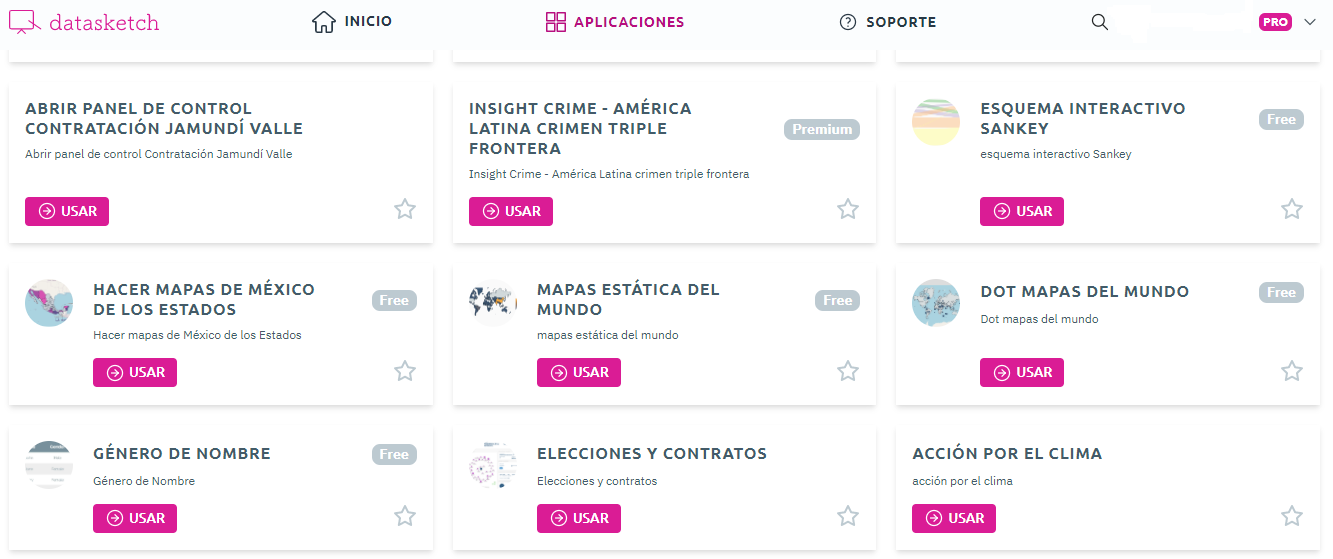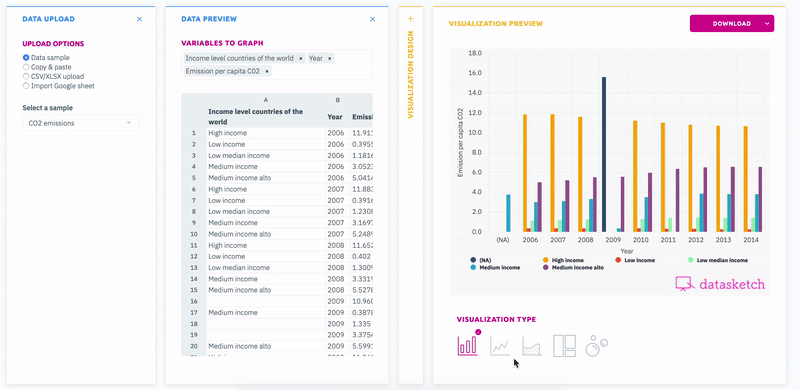Bring data to life
The job of a data journalist is to find stories in the data and in the numbers. What matters is not the numbers but what they mean.
Available in:

By Sasha Muñoz Vergara. Published: July 14, 2021
The audience doesn’t like numbers. It’s as simple as that. So that’s why the job of a data journalist is to find stories in the data and in the numbers because what matters is not the numbers but what they mean.
From Datasketch, we share the following tips that will help you get the stories out of your statistics.
Do the math for your audience.
Your story doesn’t need to be full of numbers. For example, if 250 people out of 1,000 got vaccinated, let’s say one in four got the vaccine. There is data that is not quantitative and still lends credibility and support to what you write. You will want to get rid of most of the numbers in your story and keep only essential and indispensable to tell the story.
Use attractive visualizations
An excellent way to generate recall of your data is to visualize it in a way that sticks in your audience’s mind, especially when it comes to large, complex numbers. For example, you can relate a piece of data to an image or a sound. A valuable and innovative tool can be to place sound on the data. In this example, they use music notes to show three data sets related to complaints received by the New York Department of Health and Mental Hygiene.
Include interviews and testimonies
You mustn’t overwhelm your audience with a long read by just telling them data. Instead, it’s better when you include breaks within your journalistic product, such as some visualizations, podcasts, gallery photos, or interviews and testimonials. Then, as the numbers are narrated, you ground them and make them more relatable through a person affirming or supporting why those numbers are there. Remember, it’s all about the story.
Write in an "active voice."
When writing for the web or in long-form format, a good tip is to use simple sentences composed of subject, verb, and predicate. This way, you compensate for using numerical data or statistics in your product and make it easier for the audience to read, creating a greater likelihood of understanding and, above all, reading to the end.
Check out this article from the Knight Center at the University of Michigan on the advantages of writing in an active voice.
Work with your editors or other colleagues.
Two heads are better than one. And if there are more of them, all the better. Many mistakes can be solved by revising our text or product over and over again. What is the point of giving credibility to your data if you are the only one going to process or revise it? Leaning on your colleagues and editors can be the best way to bring your story to life because you have different points of view to work on. You correct those details that were indispensable, but not for others. You make sure that you added up, or divided, or calculated complete percentages. It is not good to unconsciously make mistakes with data. It can cost you your audience.
Watch this Ted Talk about the collaborative work of journalists who uncovered one of the biggest corruption scandals.
Write for your audience.
Stories are meant to be read. One of the components to consider when writing when researching a topic is what are you talking about, what are you repeating, is there a pattern, what would you like your audience to understand, and what do you want them to understand? These questions can guide you in grounding your data in the real world. Or you can even pull stories from existing open data that other journalists may not have noticed before. Not every story has to be about scandal or the big celebrity secret.
The most important thing is that it is the people who generate the data, so since they are the ones who will later read the information, it should be alive and as close as possible to the daily life of what is being told.
Are you interested in other tools to strengthen your story? Click here to browse the apps that Datasketch has for you.





